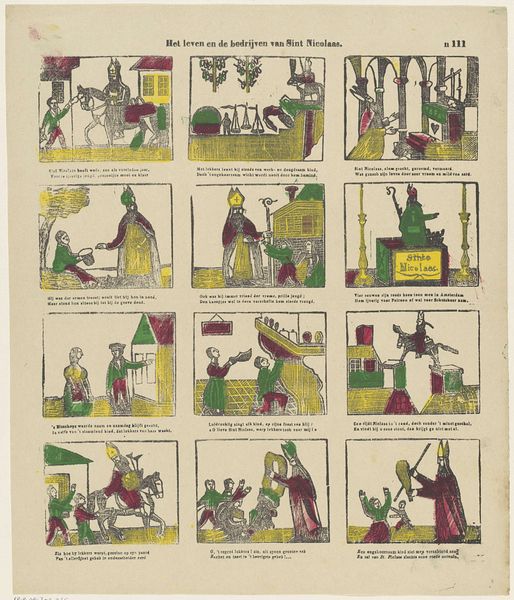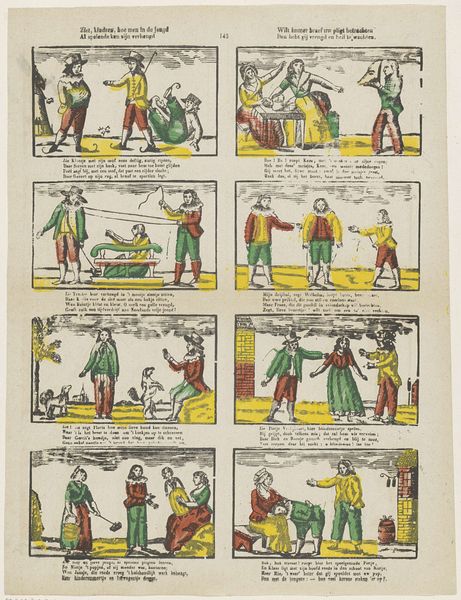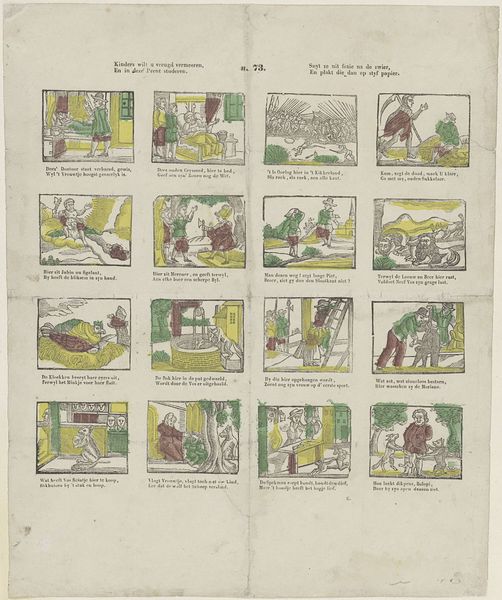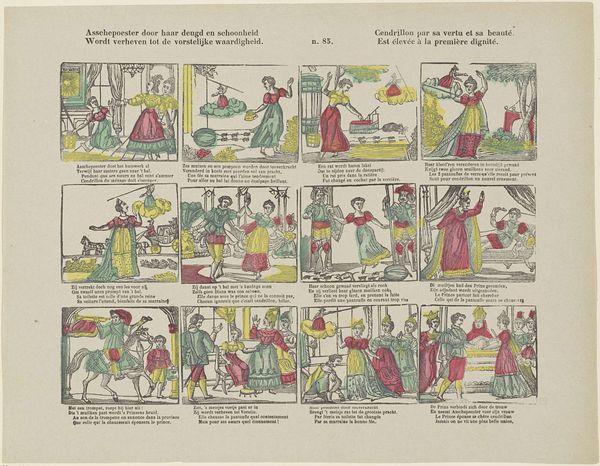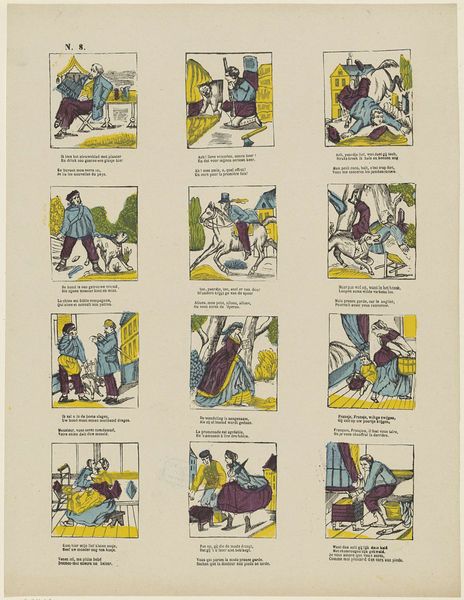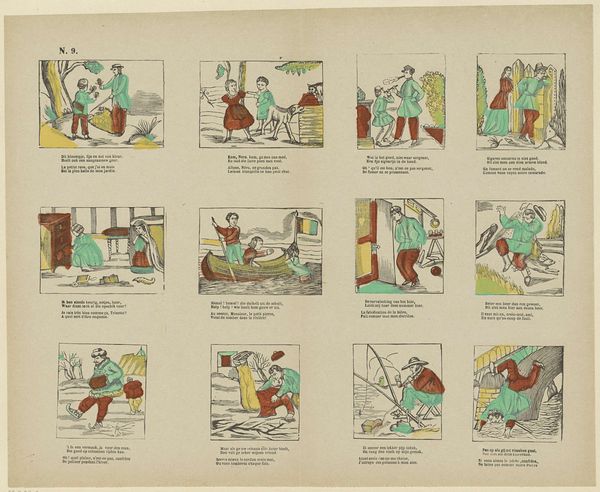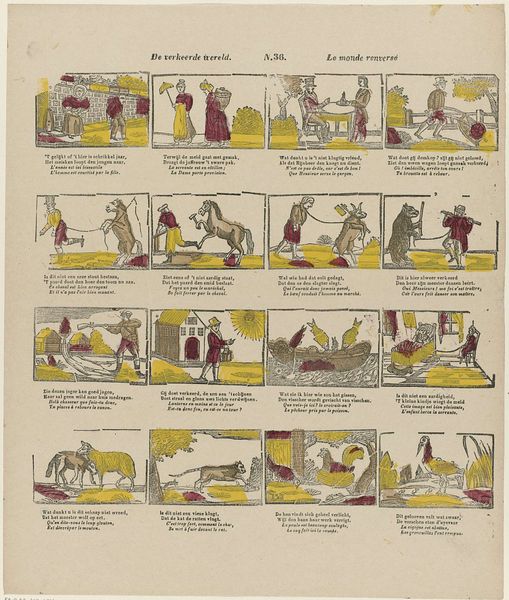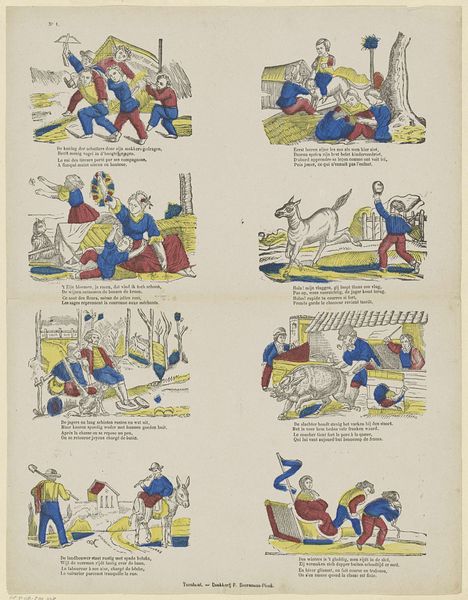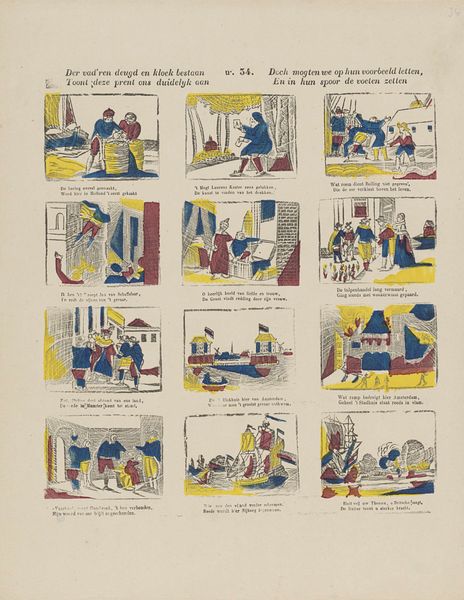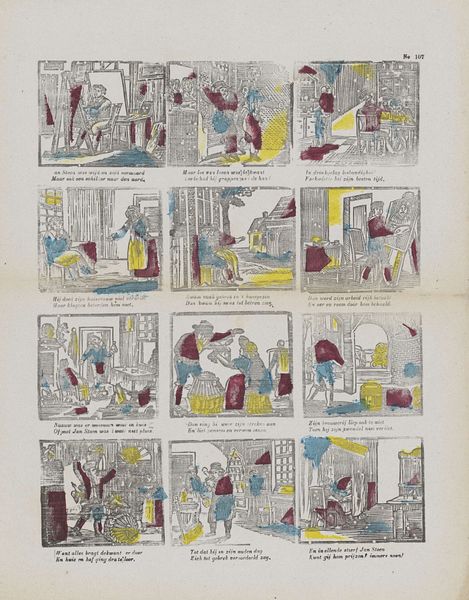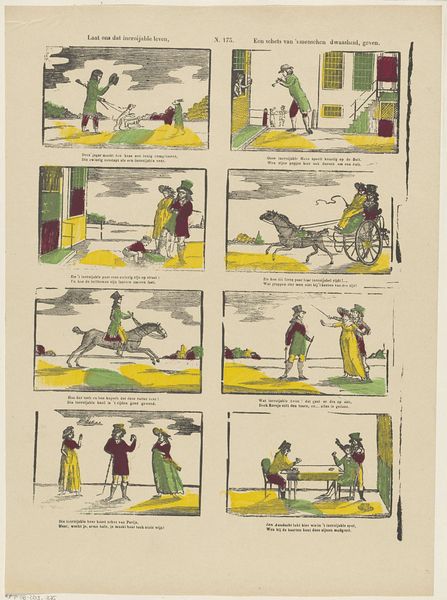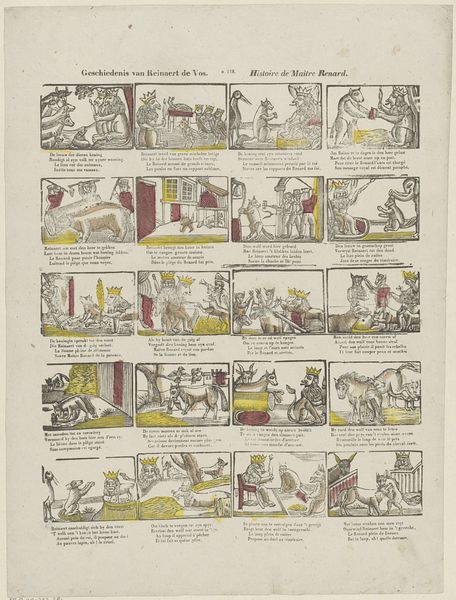
graphic-art, print
#
graphic-art
#
comic strip sketch
#
narrative-art
# print
#
old engraving style
#
folk-art
#
comic
Dimensions: height 425 mm, width 326 mm
Copyright: Rijks Museum: Open Domain
Editor: This is "Verschillende voorstellingen," or "Different Representations," by Franciscus Antonius Beersmans, created sometime between 1866 and 1902. It's a print, a graphic art piece, that kind of resembles a comic strip. What jumps out at me is the simplicity of the lines and the limited color palette. What do you see in this piece from a formal perspective? Curator: The initial point of entry is indeed the arrangement. Twelve panels structured linearly enforce an analytical, almost diagrammatic reading. Note how Beersmans employs line, often thick and stark, to define forms. Consider, too, the restricted palette—yellow, green, and reddish-brown. What compositional effects emerge from that constraint? Editor: It almost gives it a folk-art feel, maybe naive? The limited colours and the simple forms are, I guess, inherently flattening. I wonder, then, is the narrative even important? Curator: Crucially, how do these limited means foreground other qualities? Look closely at the relationship between line and color. Notice how the color fields often disobey the contours; they exist somewhat independently. Does this create a tension or a harmony in the composition? The text is disconnected, too: French captions run underneath Dutch narratives! Editor: So, it's not really about reading the comic, it's about experiencing each panel as a formal study, line against colour? That disconnectedness is an aesthetic choice as much as anything. Curator: Precisely. It shifts our attention from representational narrative to compositional interplay, revealing Beersmans’ focus on form, shape, and the relationships created between these pictorial elements, destabilising conventional visual narratives. Editor: It's amazing how much you can find simply by looking closely at the visual structure itself! I initially dismissed it, but seeing how line, color, and composition create meaning makes me appreciate it.
Comments
No comments
Be the first to comment and join the conversation on the ultimate creative platform.
